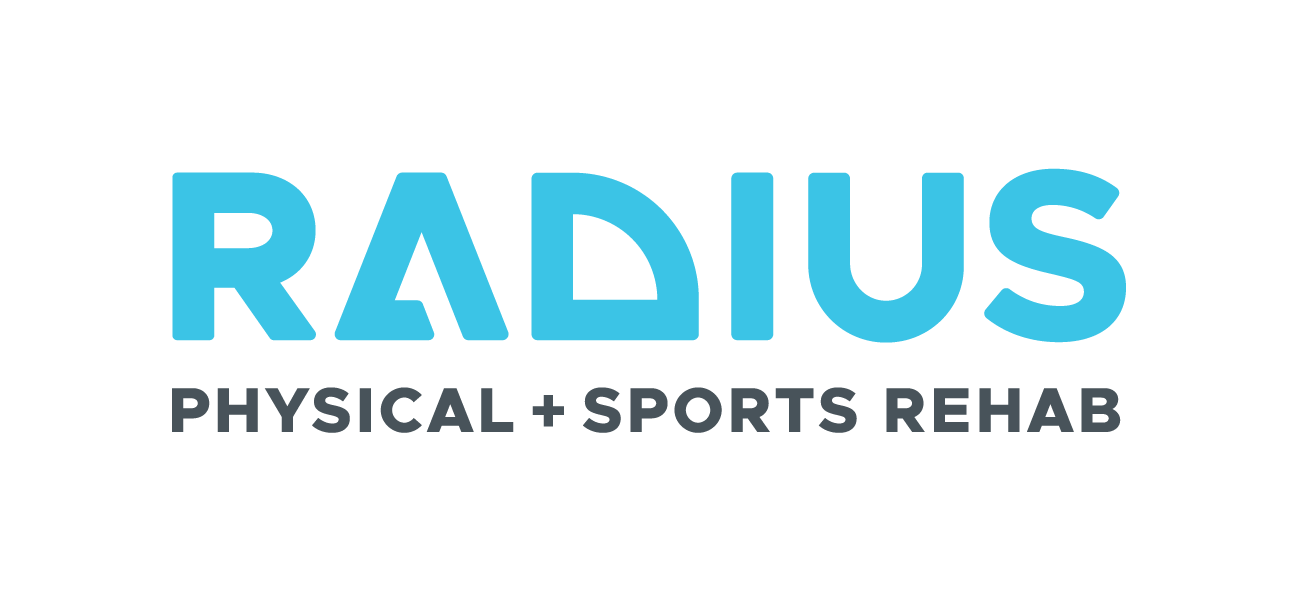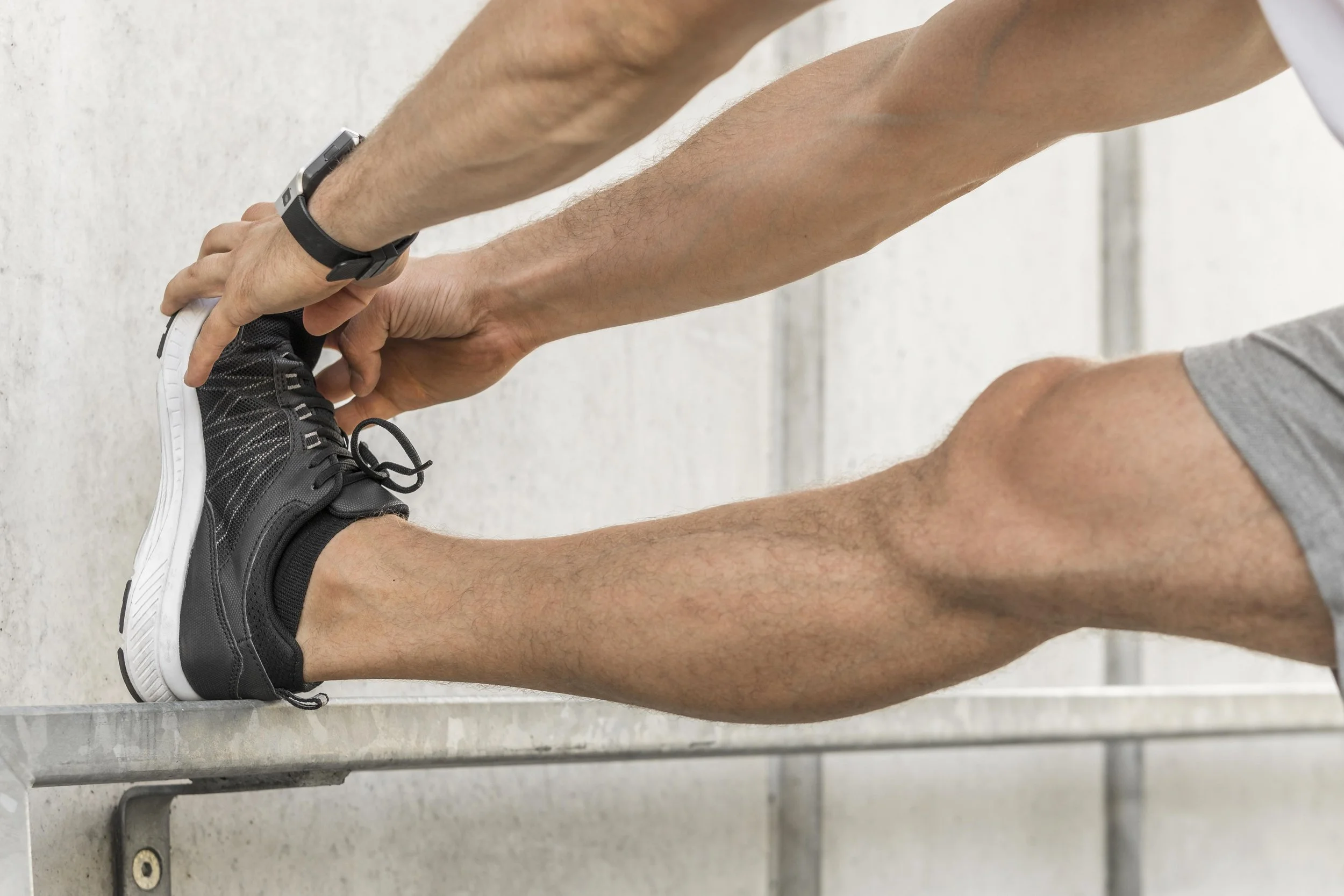Understanding Achilles Tendinopathy:
A Guide from Radius Physical + Sports Rehab
Achilles tendinopathy is a common condition that affects many active individuals, from weekend warriors to seasoned athletes. At Radius, we’re here to help you understand this condition, manage your symptoms, and get back to doing what you love. In this post, we’ll answer some of the most common questions about Achilles tendinopathy and explain how sports rehab can support your recovery.
What is Achilles Tendinopathy?
Achilles tendinopathy refers to a condition where the Achilles tendon—the strong, fibrous cord connecting your calf muscles to your heel bone—becomes irritated, inflamed, or undergoes structural changes due to overuse or injury. This tendon plays a critical role in walking, running, and jumping, making it susceptible to strain when subjected to repetitive stress or improper mechanics. Unlike a sudden tear, Achilles tendinopathy typically develops gradually, often due to factors like tight calf muscles, poor footwear, or a sudden increase in activity intensity.
What Does It Feel Like?
If you’re dealing with Achilles tendinopathy, you might notice a range of sensations depending on the severity. Common symptoms include:
Stiffness: The tendon may feel stiff, especially in the morning or after periods of rest.
Pain: A dull ache or sharp pain along the back of the heel or lower calf, often worsening with activity.
Tenderness: The area may be sensitive to touch or pressure.
Swelling: Mild swelling or a small lump might appear along the tendon in chronic cases.
Pain often starts subtly and progresses if left unaddressed, so early intervention is key.
Can You Run or Exercise with Achilles Tendinopathy?
Whether you can continue running or exercising depends on the severity of your condition and your pain levels. In mild cases, low-impact activities like swimming or cycling might be tolerable, but running and high-impact exercises often aggravate the tendon further. Pushing through significant pain can delay healing and risk a full tendon rupture—a much more serious injury. It’s best to consult with a sports chiropractor or physical therapist to assess your condition and develop a safe plan. Rest doesn’t mean complete inactivity; it’s about finding the right balance to promote recovery.
How Long Does It Take to Heal?
Healing time for Achilles tendinopathy varies widely based on factors like the extent of tendon damage, your adherence to treatment, and your activity levels. Generally, mild cases can resolve within 6-12 weeks of care, while moderate to severe cases can take upwards of 3-6 months to resolve, especially if degeneration has occurred. Tendons heal slowly because they have limited blood supply, but consistent treatment can speed up the process and prevent recurrence. Patience and commitment to rehabilitation are essential.
Are There Different Grades or Categories of Achilles Tendinopathy?
Achilles tendinopathy isn’t officially “graded” like some injuries, but categorized by stages or types based on the tendon’s condition. Achilles tendinopathy is commonly categorized as midportion or insertional, depending on the location of pain. Treatment plans may differ slightly depending on which type you have:
Early Stage (Reactive) – This is like when your shoes get wet and feel off for a bit. The tendon gets irritated and swollen from doing too much too soon—but if you ease off, it can bounce back quickly.
Middle Stage (Dysrepair) – If the irritation continues, the tendon structure starts to change, like the cushioning in your shoes breaking down. It's still fixable, but it takes more time and care.
Chronic Stage (Degenerative) – Over time, parts of the tendon may become weak and damaged—like shoes that have lost their support entirely. Recovery is still possible, but it takes a more structured plan and a bit more patience.
While imaging isn’t always necessary, ultrasound or MRI may be used to confirm diagnosis or rule out partial tears in more severe or non-responsive cases.
How Do You Treat Achilles Tendinopathy?
At Radius, we take a comprehensive approach to treating Achilles tendinopathy, combining evidence-based techniques to reduce pain, restore function, and prevent future issues. Common treatments include:
Load Management & Progressive Overload: A key part of recovery involves progressively reloading the tendon in a controlled way, rather than avoiding activity altogether. This helps the tendon adapt and become more resilient over time.
Manual Therapy: Hands-on techniques to improve calf flexibility and reduce tension around the tendon.
Shockwave Therapy: A cutting-edge option we offer, this non-invasive treatment uses high-energy sound waves to stimulate healing, reduce pain, and break down calcifications or adhesions in the tendon. It’s particularly effective for chronic cases that haven’t responded to other methods.
Activity Modification: Guidance on scaling back aggravating activities while keeping you as active as possible.
Isometric & Eccentric Exercises: In the early phases, isometric calf holds may reduce pain and provide a gateway to more dynamic loading. Specific strengthening exercises, like controlled heel drops, to rebuild tendon resilience is one dynamic loading option we might choose.
Stretching & Mobility Work: Addressing tight calf muscles or poor ankle mobility, which often contribute to the problem. Stretching is sometimes helpful, but should be tailored to your specific presentation and pain levels.
Footwear and Orthotics: Recommendations to support proper alignment and reduce strain.
In severe cases, we may collaborate with your doctor to explore additional options, though invasive options are rarely needed. Our goal is to get you back to your routine with a stronger, healthier tendon.
Take the Next Step Toward Recovery
Achilles tendinopathy can be frustrating, but it doesn’t have to sideline you forever. At Radius, our team of skilled sports chiropractors and physical therapists is ready to create a personalized plan to address your symptoms and goals. Whether you’re curious about Shockwave Therapy or just need help getting started, contact us today to schedule an evaluation. Let’s work together to keep you moving pain-free!Rest and
Choosing Radius
Radius Physical + Sports Rehab serves Nevada County (and surrounding counties), providing high-quality sports therapy for patients with all kinds of injuries or performance limitations. Our experts can help you recover from surgery (or avoid surgery), regain strength and range of motion following injuries, manage pain, and prevent recurrent injury. We also understand the mental toll that being limited in your activity can take. Our goal is to empower you with a clear, step-by-step plan that builds confidence and physical capacity. All of our professionals are experts in musculoskeletal rehabilitation, and we take great care to make you feel welcome and supported on your treatment journey to recovery.





